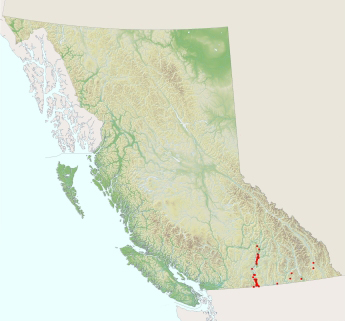Recent work on
Libellula pulchella in BC (Cannings et al. 2016) has increased the number of records and expanded the species' range in the province. Until recently, records of this species from the Kootenay and Columbia Valleys in BC were far less frequent. In addition to an historical northern outlier in the Columbia River watershed from Revelstoke (Buckell, 1938), Cannings et al. (2000) list only seven; however, since that study was published, the number of reports has increased significantly, especially in the southern Rocky Mountain Trench. The documentation of ten sites from 2014 to 2016 in the Kamloops region has added that part of the Thompson River drainage to the geographical range.
Note Author:
Rob Cannings, 2017
Source:
Cannings, Rob, John Acorn and Rick Howie. 2016. Libellula pulchella (Twelve-spotted Skimmer): Range Expansion in Western Canada. Argia 28 (4).
References cited:
Buckell, E.R. 1938. Some locality records of British Columbia dragonflies. Proceedings of the Entomological Society of British Columbia 34: 55-62.
Cannings, R.A., S.G. Cannings and L.R. Ramsay. 2000. The dragonflies (Insecta: Odonata) of the Columbia Basin, British Columbia: field surveys, collections development and public education. Royal British Columbia Museum: Living Landscapes Project. Available at http://royalbcmuseum.bc.ca/staffprofiles/files/2014/05/dragonflies4.pdf. (Accessed 1 September 2016).
